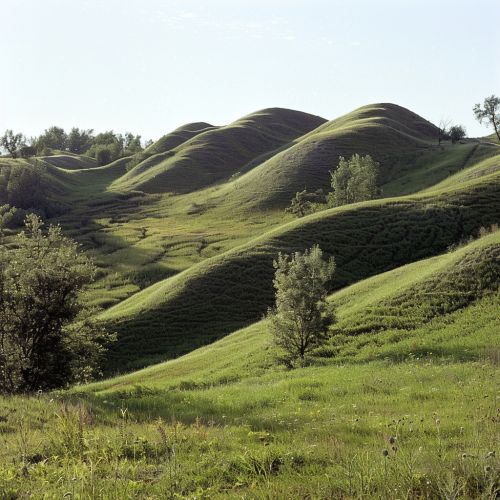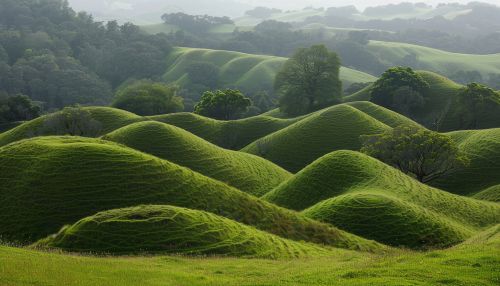Recessional moraine
Definition and Formation
A recessional moraine is a type of moraine that forms parallel to the ice margin of a glacier during a temporary pause in its retreat. These moraines are often found in a series, marking the successive positions of the glacier during its retreat. The formation of a recessional moraine is a complex process involving the interaction of glacial ice, meltwater, and sediment.
The formation of a recessional moraine begins when a glacier starts to retreat. This retreat can be triggered by a decrease in the accumulation of snow at the glacier's source or an increase in melting at its terminus. As the glacier retreats, it leaves behind a layer of unsorted sediment, known as till, which was previously carried by the ice. This till forms the base of the moraine.


Characteristics
Recessional moraines are characterized by their shape, composition, and arrangement. They typically appear as low, rounded hills or ridges, often arranged in a series or chain. The size and shape of these moraines can vary greatly, depending on the size of the glacier and the amount of sediment it carried.
The composition of a recessional moraine is typically unsorted and unstratified, reflecting the chaotic nature of glacial deposition. The sediment can range in size from fine clay and silt to large boulders. The presence of striated and faceted stones, which have been shaped by the grinding action of the glacier, is a common feature.
Examples
There are many examples of recessional moraines around the world. In North America, the Wisconsinan glaciation left a series of recessional moraines across the Midwest and Northeast. These moraines are an important part of the landscape and have been used for agriculture, housing, and recreation.
In Europe, the Fennoscandian Ice Sheet left a series of recessional moraines across Scandinavia and the Baltic countries. These moraines are often associated with lakes and wetlands, which formed in depressions between the moraines.
Importance
Recessional moraines are important for several reasons. They provide valuable information about the history of glaciers and climate change. By studying these moraines, scientists can determine the extent and timing of past glaciations, as well as the rate of glacial retreat.
Recessional moraines also play a significant role in shaping the landscape. They can create a variety of landforms, including hills, ridges, and lakes. These landforms can influence the distribution of plants and animals, as well as human activities such as farming and settlement.
